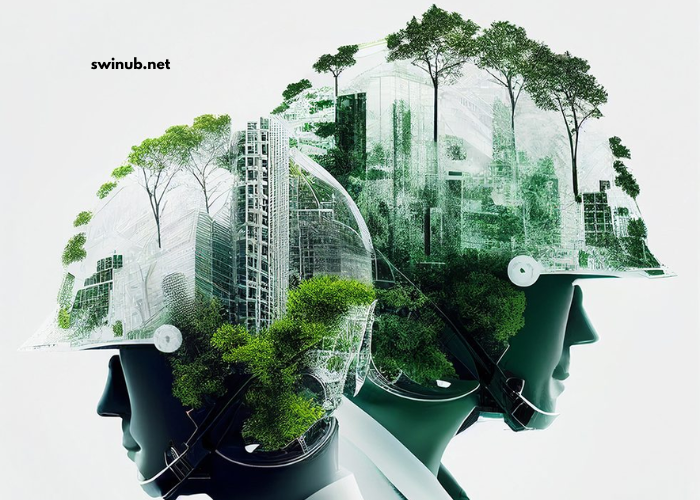In today’s rapidly evolving business landscape, building a sustainable business model is not just a competitive advantage; it is becoming essential for long-term success. Sustainable business models prioritize profitability while considering environmental, social, and economic impacts. This integrated approach is key to securing future growth, minimizing risk, and fostering innovation. In this article, we will explore the critical aspects of creating a sustainable business model, including strategies, challenges, and key insights that will help you develop a business that can thrive in a world that increasingly demands sustainability.
Understanding the Concept of a Sustainable Business Model
A sustainable business model is one that not only aims to generate profit but also incorporates environmental, social, and governance (ESG) principles into its operations. The core idea behind sustainability is to meet the needs of the present without compromising the ability of future generations to meet their own needs. Sustainable business models go beyond traditional profit-focused strategies by considering the long-term impact on the planet and society.
Key Features of a Sustainable Business Model
- Environmental Responsibility: This involves reducing the environmental impact of business operations, including energy use, waste, water consumption, and carbon emissions. Sustainable businesses aim to minimize their ecological footprint.
- Social Responsibility: Businesses with a sustainable model consider the welfare of their employees, customers, and communities. This includes fair labor practices, inclusive workplaces, and contributions to social causes.
- Economic Viability: Economic sustainability ensures that the business remains profitable over the long term, even while balancing social and environmental goals. A business must be financially healthy to maintain its operations and continue to contribute positively to society and the environment.
- Long-term Value Creation: Sustainable businesses focus on creating value for stakeholders—not just shareholders—over the long term. This includes customers, employees, communities, and the environment.
Why Sustainability is Crucial for Modern Businesses
Increased Consumer Demand for Ethical Practices
Consumers today are more informed and conscious of the ethical practices behind the products they purchase. According to several reports, people are increasingly willing to support businesses that demonstrate sustainability and social responsibility. This shift in consumer preferences highlights the importance of aligning business strategies with sustainable practices.
Regulatory Pressure and Compliance
Governments and international bodies are placing increasing pressure on businesses to adhere to sustainability standards and reduce their environmental impact. From carbon emissions regulations to waste management policies, complying with these regulations is becoming a necessity for businesses to operate legally and avoid penalties.
Risk Mitigation
A sustainable business model can act as a risk mitigation tool by reducing dependencies on non-renewable resources, improving supply chain resilience, and anticipating changes in regulatory environments. By adopting sustainable practices, businesses can future-proof themselves against unforeseen challenges and disruptions.
Innovation and Competitive Edge
Sustainability fosters innovation. By focusing on environmentally friendly alternatives and socially responsible practices, businesses often discover new products, services, and processes that give them a competitive edge. Sustainability can also improve brand loyalty, attract talent, and enhance customer satisfaction, leading to better market positioning.
Key Insights for Building a Sustainable Business Model
Creating a sustainable business model requires careful planning and thoughtful consideration of various factors. The following insights provide guidance on how businesses can integrate sustainability into their operations and thrive in the long term.
1. Focus on Circular Economy Principles
One of the most effective ways to build a sustainable business model is by adopting circular economy principles. A circular economy aims to close the loop of product lifecycles through practices such as recycling, reusing, and remanufacturing products. This model contrasts with the traditional linear economy, where products are made, used, and discarded. By embracing circularity, businesses can reduce waste, conserve resources, and create new revenue streams.
Key Strategies for Implementing Circular Economy
- Product Design: Focus on designing products that can be easily disassembled and reused. Products with modular components can be refurbished or repaired instead of disposed of.
- Resource Recovery: Develop systems for recovering materials from end-of-life products and reintegrating them into the supply chain. For example, electronics manufacturers can recycle precious metals from old devices.
- Sharing Economy: Instead of focusing on ownership, businesses can create platforms that promote sharing, such as car-sharing, tool rental, or accommodation-sharing services.
2. Integrate Sustainability into Your Supply Chain
A sustainable business model cannot thrive if it relies on unsustainable suppliers or partners. Therefore, integrating sustainability into your supply chain is crucial. This can involve choosing suppliers who adhere to sustainable practices, such as sourcing raw materials responsibly, using renewable energy, and ensuring fair labor practices.
Steps to Build a Sustainable Supply Chain
- Supplier Audits: Conduct regular audits to assess the sustainability practices of your suppliers. Ensure that they meet your business’s environmental, social, and governance standards.
- Collaborative Partnerships: Work closely with suppliers to improve sustainability across the supply chain. Offer incentives or support for suppliers to adopt greener practices or more ethical labor policies.
- Transparency: Be transparent about the origins of your products and the sustainability practices employed in the supply chain. This builds consumer trust and encourages more responsible production processes.
3. Embrace Renewable Energy
Energy consumption is one of the largest contributors to a business’s carbon footprint. By shifting to renewable energy sources, companies can significantly reduce their environmental impact while often benefiting from lower long-term energy costs. Wind, solar, and hydroelectric power are becoming increasingly accessible for businesses of all sizes.
Renewable Energy Strategies
- Energy Efficiency: Invest in energy-efficient technologies and practices, such as LED lighting, high-efficiency HVAC systems, and automation tools that optimize energy use.
- On-site Renewable Energy: If feasible, consider installing solar panels or wind turbines on-site to generate renewable energy for your operations.
- Energy Procurement: Source renewable energy from external suppliers. Many energy providers offer renewable energy options that businesses can purchase as part of their energy supply.
4. Develop a Long-term Sustainability Strategy
A sustainable business model doesn’t happen overnight. It requires careful planning, ongoing evaluation, and long-term commitment. Businesses should create a sustainability roadmap that outlines clear goals, targets, and KPIs to measure progress. This strategy should be reviewed regularly and updated to adapt to new challenges and opportunities in the sustainability space.
Components of a Sustainable Strategy
- Mission and Vision: Clearly define your commitment to sustainability and communicate it to all stakeholders. Your mission should reflect your dedication to social and environmental responsibility.
- Goal Setting: Set measurable and time-bound sustainability goals, such as reducing carbon emissions by a specific percentage over the next five years or achieving zero waste to landfill.
- Employee Engagement: Engage employees at all levels in the sustainability journey. Offer training, incentives, and opportunities for involvement in sustainability initiatives.
5. Foster Innovation Through Sustainability
Sustainability is not only about reducing harm; it’s also about creating positive impact. By fostering a culture of innovation around sustainable practices, businesses can develop new products and services that address environmental and social challenges.
Areas of Innovation
- Sustainable Products: Develop eco-friendly products that use sustainable materials, have lower environmental footprints, and are designed for a longer life cycle.
- Green Technologies: Invest in research and development of green technologies, such as energy-efficient manufacturing processes, sustainable packaging, and environmentally friendly transportation solutions.
- Business Models: Explore new business models that prioritize sustainability, such as subscription-based services that reduce waste or pay-per-use models that limit unnecessary consumption.
Overcoming Challenges in Building a Sustainable Business Model
While the advantages of building a sustainable business model are clear, businesses may face several challenges along the way. Some of these include:
1. Initial Investment Costs
Transitioning to a sustainable model often involves upfront costs for energy-efficient technologies, waste management systems, and eco-friendly product development. However, these investments often lead to long-term savings, increased efficiency, and greater market appeal.
2. Resistance to Change
In many organizations, there may be resistance to adopting new practices, particularly if they require significant changes to existing processes. To overcome this, businesses must create a culture of sustainability and clearly communicate the long-term benefits of making the transition.
3. Measuring Sustainability
Measuring sustainability can be complex, as it involves numerous factors, including environmental, social, and economic metrics. Businesses need to develop robust frameworks to track their sustainability performance and ensure that their efforts are aligned with their goals.
Conclusion
Building a sustainable business model is not just a trend; it’s a necessary shift for businesses that aim to thrive in the future. By focusing on sustainability at every level—from product design and supply chain management to energy usage and innovation—companies can reduce their environmental footprint, contribute to social welfare, and maintain profitability. While challenges exist, the long-term benefits of adopting sustainable practices, such as risk mitigation, customer loyalty, and regulatory compliance, make it a worthwhile endeavor for any business looking to succeed in the modern economy.


